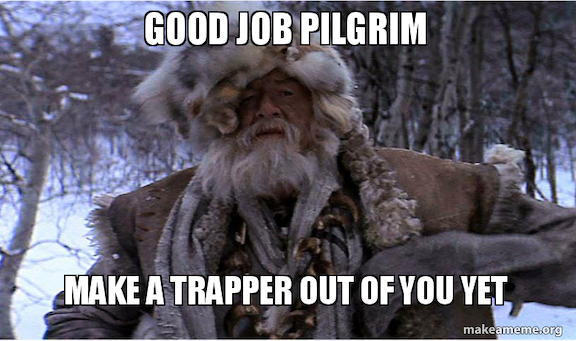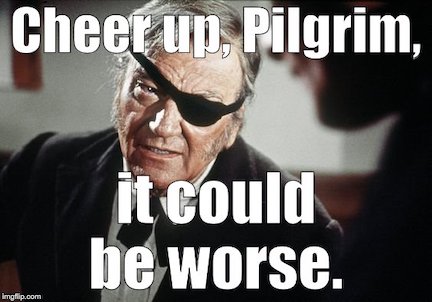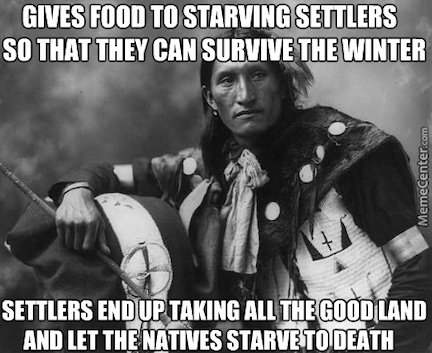
The Mayflower Compact wasn’t as popular in third grade history as the buckled shoes the Pilgrims wore.
It wasn’t a big hit in the college classes I took that resulted in a bachelor’s degree in American History, either.
Luckily, C-SPAN3 American History TV cleared the fog that covers the past.
International readers: this is an American view.
American readers: We should know this better.
A group of worshippers decided that the Church of England wasn’t getting it done for their spiritual needs. Their dissatisfaction led them to start a community in the New World in 1620.
Religious differences broke a hundred years earlier when German Catholic educator Martin Luther nailed his Ninety-Five Theses to a church door in 1517 to kick off the Protestant Reformation.
England broke their bond to The Church in the 1530’s and replaced it with The Church of England.
Quick Pilgrim Review: They didn’t like the direction the Church of England took, who didn’t like the rule of the Catholic Church, which was the reason Luther broke out his hammer.
Persistent Pilgrims Set Sail

Who today would be so bold as to lead a group into the unknown based on a shared faith in a land so far away from everything they’ve known?
Overcoming multiple launch problems, more than a hundred people finally set sail to their future.
Roughly half were Pilgrims, the other half designated as Strangers, along with the ship’s crew, and all overcame the challenges of the sea.
The Quaker Friends were not on board.
Instead of landing where they’d planned, they pulled up further north of Virginia, further north of Hudson’s Bay, to New England and outside the rule of England.
The Strangers on board decided they had all the freedom they wanted since they were outside the English jurisdiction in the New World. But both Pilgrims and Strangers needed one another, which led to an agreement.
Mayflower Compact Creates A Bond
Roughly half from the Mayflower died during their first year in America.
More would have perished if not for Mayflower Compact and help from the native population who had interacted with Europeans fishing along the coast for many years.
One of the locals had learned English and worked as an interpreter between the Pilgrims and larger tribes, which created a peaceful period of adjustment.
Part of the commerce in the region was the fur trade. Eventually the business dried up from over-harvesting fur animals in the region. Without the fur trade barter for manufactured goods, native tribes turned to another resource:
Their land.
From the Mayflower landing onward, the surviving Pilgrim families created little Pilgrims, some families with nine kids, along with a continuous parade of ships bringing new arrivals.
The New World was off and running with cooperation between new and original people. But it was getting crowded.
King Phillips War

. . .also known as the First Indian War, the Great Narragansett War or Metacom’s Rebellion — took place in southern New England from 1675 to 1676. It was the Native Americans’ last-ditch effort to avoid recognizing English authority and stop English settlement on their native lands.
One hundred years later the new Americans staged their own last ditch effort to avoid English authority with The Revolutionary War. They fought for their freedom the same as Native Americans did for their security.
. . . around 700 Nipmuc Indians ambushed a militia group escorting a wagon train of colonists. Almost all colonists and militia were killed in the fighting, known as the Battle of Bloody Brook.
. . . Plymouth Colony’s Governor Josiah Winslow gathered the colonial militia and attacked a massive Narragansett and Wampanoag fortification near the Great Swamp in West Kingston, Rhode Island, on December 19, 1675.
It is estimated that 300 Indians, including women and children, were either killed in the attack or died from exposure to the winter elements; some were burned alive at the stake.
In an attack known as the “Nine Men’s Misery” incident, Narragansett Indians ambushed around 60 colonists and 20 Christian Wampanoag Indians. The Indians killed almost all the colonists; however, nine men were captured and gruesomely tortured to death.
In April, Chief Canonchet was captured, handed over to the Mohegans and shot, beheaded and quartered, leaving the Narragansett without a leader. In May, the militia attacked and killed up to 200 Narragansett at the Battle of Turner Falls at Peskeompscut near the Connecticut River.
By mid-summer, the English started giving amnesty to some Indians. A lot of war-weary Indians surrendered; however, the English sold many into slavery.
King Philip was hung, beheaded, drawn and quartered. His head was placed on a spike and displayed at Plymouth colony for two decades.
America Started With The Mayflower Compact?
Early American pilgrim history isn’t the same as Greek, Roman, or Egyptian history.
We are not the cradle of civilization.
Or the cradle of democracy.
At the same time we weren’t founded by religious zealots exclusively since half the population on the first Mayflower crossing weren’t part of the church group.
The Strangers signed on to the Mayflower Compact because it was a practical necessity. The Pilgrims welcomed them for the same reason.
Their agreement, and the joint agreement with the the people living in America for the thousands of years before them, paved the way for cooperation during their first fifty years together.
Today we are in the midst of a pandemic, the war against covid19, and the key is still cooperation.
Some get it better than others. Wearing a mask, hand hygiene, and social distancing isn’t the same as taking up arms, but the end result is the same.
Protect yourself by protecting others. Mask up.


